What's New
Displaying results 1781 - 1790 of 4052
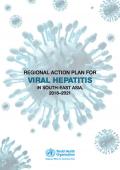
Resource | Publications,
Viral hepatitis now ranks as the seventh leading cause of mortality worldwide. Although mortality due to communicable diseases has declined globally, the absolute burden and relative ranking of viral hepatitis as a cause of mortality has increased between 1990 and 2013.
The regional action plan's goal is to eliminate viral hepatitis as a major public health threat in the Region by the year 2030. It aims to provide an actionable framework of evidence-based, priority interventions to support national responses for prevention, control and management of viral hepatitis.
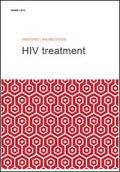
Resource | Reviews and Snapshots,
The world has embraced the UNAIDS 90–90–90 treatment target, whereby 90% of people living with HIV know their HIV status, 90% of people who know their HIV-positive status are accessing antiretroviral treatment, and 90% of people on treatment have suppressed viral loads. By reaching the 90–90–90 treatment target by 2020, the world will be firmly on track towards ending the AIDS epidemic by 2030.
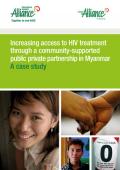
Resource | Publications,
This case study describes the model and outcomes of the public private partnership (PPP) that has been implemented by the Alliance since 2009 in Yangon, Myanmar. This information and evidence is essential to support and guide possible expansion and replication of this model in efforts to decentralise ART delivery in other contexts, whilst easing the burden on public health facilities. It highlights the collaborative role of the partners; high impact strategies that have contributed to the success of the model; lessons learnt, best practice and patient outcomes; and concludes with recommendations regarding how this model may be improved.
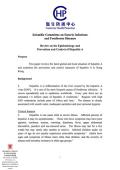
Resource | Reviews and Snapshots,
This paper reviews the latest global and local situation of hepatitis A and examines the prevention and control measures of hepatitis A in Hong Kong.
Hepatitis A is inflammation of the liver caused by the hepatitis A virus (HAV). It is one of the most frequent causes of foodborne infection. It occurs sporadically and in epidemics worldwide. Every year there are an estimated 1.4 million cases of hepatitis A worldwide. Regions with high HAV endemicity include parts of Africa and Asia. The disease is closely associated with unsafe water, inadequate sanitation and poor personal hygiene.
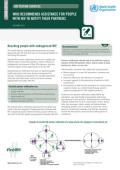
Resource | Fact Sheets,
The sexual partners and drug injecting partners of people diagnosed with HIV infection have an increased probability of also being HIV-positive.
Assisted HIV partner notification services are a simple and effective way to reach these partners, many of whom are undiagnosed and unaware of their HIV exposure, and may welcome support and an opportunity to test for HIV.
Assisted partner notification has been an important public health approach in infectious disease management for decades, including in programmes for sexually transmitted infections and tuberculosis, but has not been routinely implemented for people with HIV.
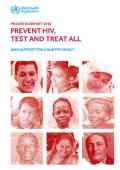
Resource | Publications,
The global HIV epidemic claimed fewer lives in 2015 than at any point in almost two decades, and fewer people became newly infected with HIV than in any year since 1991. The list of countries on the brink of eliminating new HIV infections among children keeps growing. A massive expansion of antiretroviral therapy (ART) has reduced the global number of people dying from HIV-related causes to about 1.1 million in 2015 – 45% fewer than in 2005. UNAIDS/WHO estimates show that more than 18 million people were receiving ART in mid-2016.
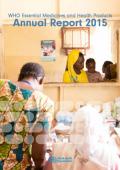
Resource | Publications,
2015 confirmed a significant recent trend in the flagship WHO Model List of Essential Medicines with groundbreaking new treatments for hepatitis C and a variety of cancers included in the list despite their high prices. The list also included five new medicines for multidrug resistant tuberculosis (TB), among other updates. Traditionally considered a tool for developing countries to use as a guide for national medicines selection, the WHO Essential Medicines List is increasingly seen as a tool to increase access globally.

Resource | Publications,
This report is an excellent review of the current status and future plans for the control of TB in the SAARC Region. It includes information on burden of tuberculosis in the SAARC region, including incidence, mortality along with the MDR-TB, TB/HIV confection, etc. It also covers the information of the year 2014 and has been prepared on the basis of information collected from member countries during the year 2015 and by reviewing other related documents.

Resource | Fact Sheets,
A confluence of biologic and social conditions creates the ‘perfect storm’ for the interaction of silicosis, HIV and TB in the mining industry. This phenomenon is best documented in the mining industry of South Africa, but evidence is emerging that similar patterns are developing elsewhere. However, research outside of sub-Saharan Africa is sparse, thus limiting the understanding of the need for interventions.
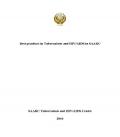
Resource | Publications,
This document provides information about best practices on treatment, care and support on Tuberculosis and HIV/AIDS in SAARC Member States. Best practices comprise examples of programmes, projects and activities that have been shown to contribute towards making interventions successful. We have made maximum efforts to focus on the detail information on the “Best Practices” and epidemiological information about Tuberculosis and HIV/AIDS situation in SAARC Member States.





